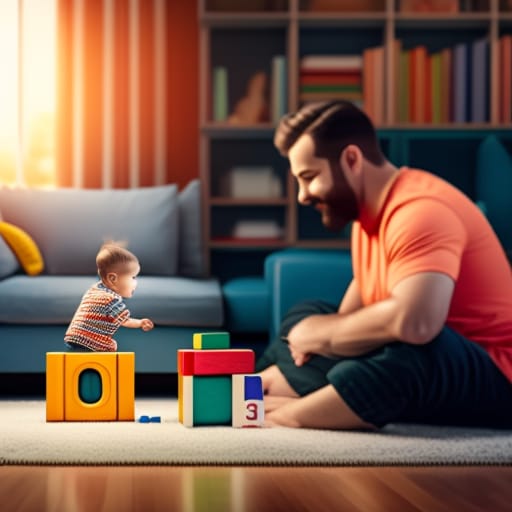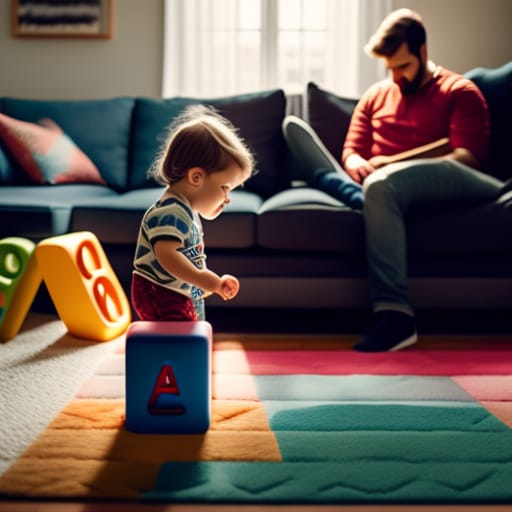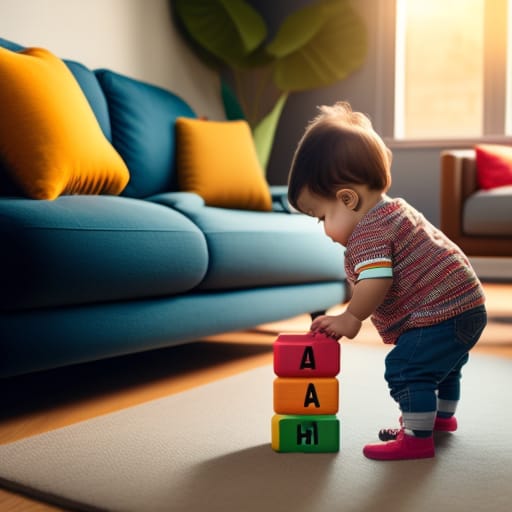ABC building blocks are a classic toy that has been used for generations to help young children learn letters, words, and basic concepts. As one of the most popular educational toys on the market, ABC blocks come in many varieties and offer a wide range of benefits for early learning and development.
In this comprehensive guide, we will explore everything you need to know about ABC building blocks, including the different types of blocks available, their developmental benefits, tips for maximizing play value, and our top recommendations. Whether you are a parent, teacher, or gift-giver, this article will provide extensive information on how ABC blocks can support early learning skills.

A Brief Overview of ABC Building Blocks
ABC blocks are wooden or plastic blocks shaped like letters of the alphabet that allow children to learn letter recognition, phonics, and spelling. Most sets also include blocks with numbers, shapes, objects, colors, and symbols.
By handling the blocks and arranging them to build words or structures, toddlers and preschoolers develop:
- Fine motor skills
- Hand-eye coordination
- Spatial reasoning
- Early literacy skills like letter recognition
- Early math skills like sorting, counting, and patterns
In short, ABC blocks transform the process of learning the alphabet and basic concepts into a fun, hands-on experience. They provide an engaging way for young children to build knowledge through active play.
The Different Types of ABC Blocks
ABC blocks come in many varieties to suit all ages and interests. Here are some of the main types available:
Basic Wooden Blocks
These classic alphabet blocks are made of solid wood cut into cube shapes and painted with non-toxic paint. Key features include:
- Painted upper case letters, numbers 1-10, and simple pictures or icons
- Smooth, sanded edges for safety
- Vibrant colors
- Durable hardwood material such as maple or beech
They help teach letter recognition, phonics, early math, and motor skills.
Character Building Blocks
These special ABC blocks feature upper and lower case letters plus images of characters, animals, or objects to illustrate each letter. For example, A might have an apple, and B with a bird. Benefits include:
- Learn letter sounds connected to words and objects
- Build vocabulary and word association skills
- More engaging, color illustrations
Deluxe Building Block Sets
Bigger deluxe sets take blocks to the next level with more pieces, storage containers, activity mats, and advanced learning concepts like:
- Upper and lowercase letters
- Numbers, math symbols
- Shapes and colors
- Object/image blocks
- Storage bins or zippered bags
- Play mats with related graphics
- 100+ pieces
Deluxe sets allow you to explore letters, phonics, reading, writing, math, problem-solving, and motor skills in greater depth.
Electronic ABC Blocks
Electronic letter blocks add lights, sounds, music, and technology features to the classic blocks:
- Blocks light up or make sounds/phrases when pressed
- Interactive games teach phonics and reading
- Apps for more digital learning
- Can be expensive
Electronic blocks engage kids through sights and sounds but are less hands-on.
Magnetic Blocks
These ABC blocks have magnets embedded inside so they stick together. Benefits include:
- Blocks grip together to build vertically
- Magnets make play more engaging
- Promote STEM and engineering skills
- Still allow hands-on, imaginative play
Magnetic blocks allow more open-ended building play and heighten early physics lessons.
As you can see, ABC blocks come in a wide variety of types, features, and price points. Consider your child’s age, interests, and learning style when choosing between basic wooden blocks and more deluxe or tech-enhanced sets.

The Many Benefits of ABC Blocks for Early Learning
Beyond just recognizing letters, ABC blocks provide a multitude of developmental benefits that make them a top educational toy for the preschool set. Here are some of the top skills kids can gain:
Literacy Skills
As their name suggests, ABC blocks are designed first and foremost to build emergent literacy abilities:
- Letter recognition – Seeing and feeling the shape of each letter
- Phonics – Connecting letters to their sounds
- Reading readiness – Building awareness of letters, sounds, words
- Spelling – Arranging letters to spell out simple words
- Vocabulary – Learning new words associated with pictures on blocks
ABC blocks lay the foundation for reading, writing, and verbal skills through hands-on letter learning.
Math Skills
Beyond letters, many ABC block sets also integrate numbers, math symbols, shapes, and colors to develop early math abilities:
- Counting & numbers – Counting blocks, recognizing numerals
- Shapes – Learning shape names and properties
- Patterns – Creating, reproducing, and extending patterns
- Measurement – Visualizing and comparing lengths, heights
- Sorting/classifying – Group, sort by color, shape, letter type
Math concept exposure prepares kids for formal math instruction.
Physical Skills
The hands-on nature of manipulating ABC blocks develops children’s fine and gross motor abilities:
- Fine motor skills – Precision grasping, stacking, moving blocks
- Hand-eye coordination – Visually tracking and grasping objects
- Gross motor skills – Reaching, carrying, lifting, balancing blocks
- Spatial awareness – Stacking, orienting blocks in space
Great for improving dexterity, coordination, and balance.
Cognitive Skills
As a constructive open-ended toy, ABC blocks exercise a child’s higher-order thinking in many ways:
- Problem-solving – Planning structures and solving issues
- Critical thinking – Making decisions on how to build and create
- Imagination – Sparking creative pretend play scenarios
- Sensory play – Using sight, touch, sound, and motion to explore
- Cause & effect – Discovering what structures can successfully be built
Blocks encourage inquiry, discovery, analysis, and critical thought.
Social-Emotional Skills
Playing collaboratively with blocks promotes key social-emotional abilities:
- Communication – Verbalizing ideas and plans for building
- Collaboration – Working together to create structures
- Sharing – Taking turns and sharing blocks
- Emotional skills – Expressing joy, pride, frustration, perseverance
- Role play – Pretend play acting out narratives with blocks
Social interplay with peers or parents builds people skills.
Clearly, ABC blocks offer an incredibly multifaceted early learning experience spanning literacy, STEM, physical, cognitive, and social-emotional development.
Maximizing the Learning Value of ABC Block Play
To get the most growth and development out of ABC block play, incorporate these helpful tips:
Play Alongside Your Child
Sitting down and playing collaboratively provides bonding time and allows you to guide the experience. Verbalize block names, colors, and letters as you build together. Ask open questions that encourage problem-solving.
Organize Blocks by Type
Sort blocks into separate containers by letter, number, shape, or color. This helps kids easily find specific blocks they need and reinforces sorting/classifying skills.
Follow Their Interests
Allow your child to build freely using their imagination or recreate objects they love like trucks, planes, or animals. This promotes creativity and engagement.
Teach Letter-Sound Connections
As you play, emphasize the letters, pictures, and objects on blocks. Draw connections between letter shapes and their sounds aloud.
Create Letter and Word Activities
In addition to free building, set out challenges like spelling their name, matching capital to lowercase letters, or sounding out CVC words.
Build Beyond Blocks
Expand block play by incorporating related toys like block play mats, plastic people and animals, garages, or toy transportation vehicles. Extend the narrative play.
Rotate New Blocks In
To keep the learning fresh, put some sets away for a few weeks then return them to circulation. The “new” blocks will re-spark interest.
Keep the learning varied, imaginative, and interactive through purposeful ABC block play activities.
Top Recommended ABC Block Sets
With so many ABC blocks available, here are 5 top-rated sets to consider:
| Product | Description | Price |
|---|---|---|
| Melissa & Doug Wooden ABC/123 Blocks | 60 hardwood blocks with uppercase letters, numbers, and objects. | $19.99 |
| Play22 Magnetic Wooden ABC Blocks | 71 pieces with storage pouch. Uppercase letters, numbers, math symbols. | $29.99 |
| Maple Landmark NameTrain Deluxe ABC Blocks | 77 pieces including track, train, and interactive learning guide. | $34.99 |
| TickiT Early Learner Block Set | 75 pieces including activity cards & instruction guide. | $37.99 |
| Schylling ABC StoryBlocks | Colorfully illustrated blocks that tell stories. | $44.99 |
Melissa and Doug make timeless solid wood blocks featuring vivid colors, finishes, and illustrations.
Play22 magnetic blocks allow more flexibility and stability when building vertically. Fun, engaging material.
NameTrain incorporates an alphabet train, tracks, and a learning guide for more ways to interact and play.
TickiT blocks are designed by educational experts and come with extension resources to get the most learning value.
Schylling StoryBlocks creates a narrative-building experience by illustrating themed stories across the blocks.
Any of these highly-rated ABC block sets make an excellent choice for reinforcing early learning skills through play. The larger sets with extra pieces, features, and activities allow for more advanced building challenges as kids develop.

The Takeaway on ABC Blocks and Early Learning
For over a century, ABC blocks have been a staple developmentally appropriate toy to introduce letters, literacy, math, and concepts in a hands-on way. With endless arrangements and play potential, blocks engage imagination and cognition while developing fine motor, problem-solving, and early academic skills kids need to thrive in school.
By selecting a quality set of blocks suited for your child’s age and abilities, and then actively playing and reinforcing lessons, ABC blocks can provide significant developmental dividends and quality bonding time. This classic toy has stood the test of time and remains an essential tool for early learning success.
Frequently Asked Questions
How do ABC blocks benefit early learning?
ABC blocks provide a fun, engaging way for preschoolers to develop essential skills including letter recognition, phonics, early math concepts like sorting and patterns, and fine motor dexterity. Playing with the colorful blocks sparks important cognitive abilities like imagination and problem-solving. The hands-on lessons prepare children for academic and social success.
What skills do toddlers learn from ABC blocks?
For toddlers, benefits include practicing hand-eye coordination by grasping blocks, developing gross motor skills like reaching and stacking, learning about shapes, colors, and first numbers, experiencing cause & effect by stacking and knocking down structures, and enhancing sensory development by manipulating the blocks.
What age are ABC blocks appropriate for?
ABC blocks can be introduced around 12 months but are most beneficial for toddlers 18 months – 3 years as they develop language, literacy, and motor skills. Blocks with smaller pieces are choking hazards for under 3s, so stick to larger beginner blocks. By ages 4-5, kids can master building more complex structures.
How many ABC blocks are needed?
To start, aim for 20-30 block pieces with a good variety of letters, numbers, shapes, and colors to allow for creative building. Larger deluxe sets with 50-100+ pieces enable more advanced construction play to keep kids challenged as skills progress. Rotate blocks in and out to refresh interest.
How can I maximize ABC block learning?
Maximize learning by playing collaboratively and describing block attributes out loud. Sort blocks into separate containers to allow easier finding. Follow the child’s interests as they build creatively. Relate the pictures on blocks to their sounds and names. Create challenges like spelling their name or targeted words. Incorporate other toys like play mats, cars, and figurines to extend imaginative play narratives.